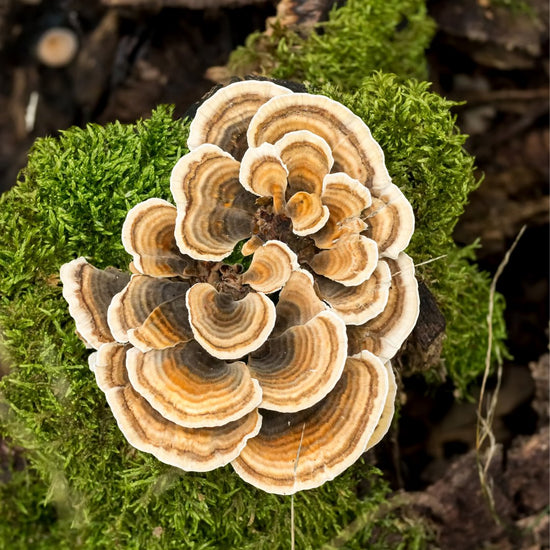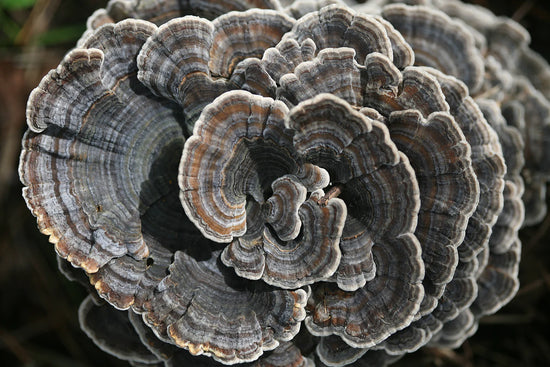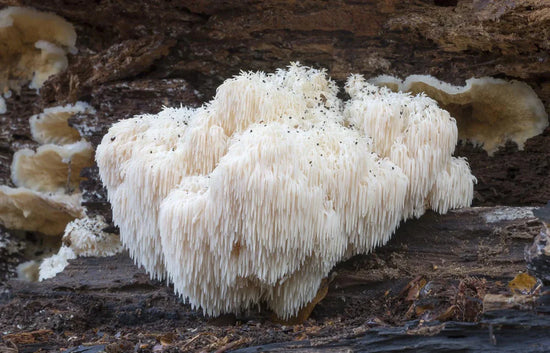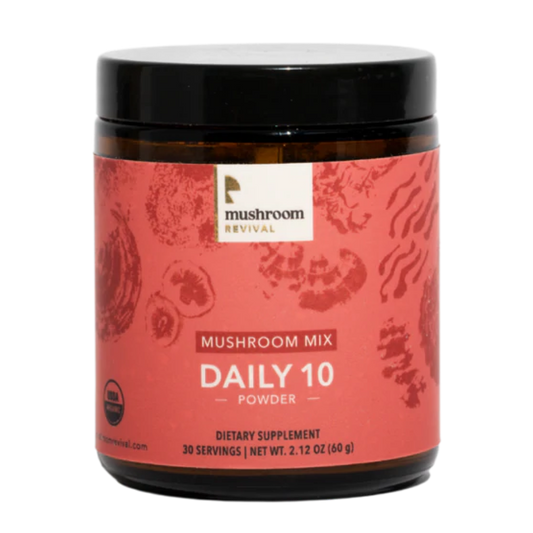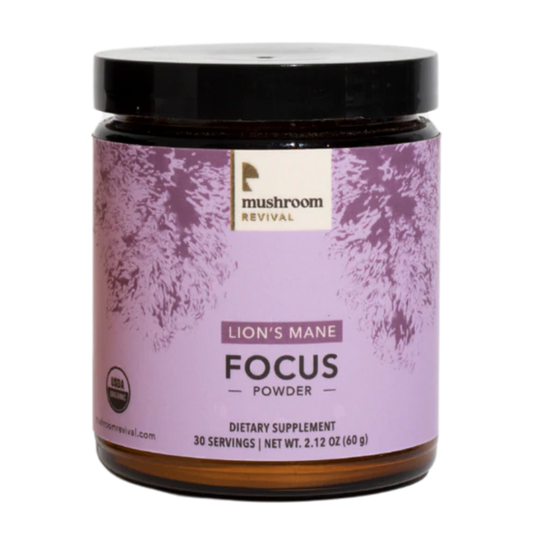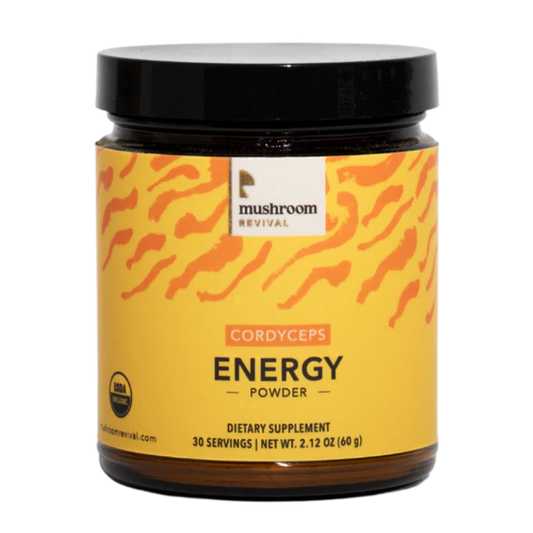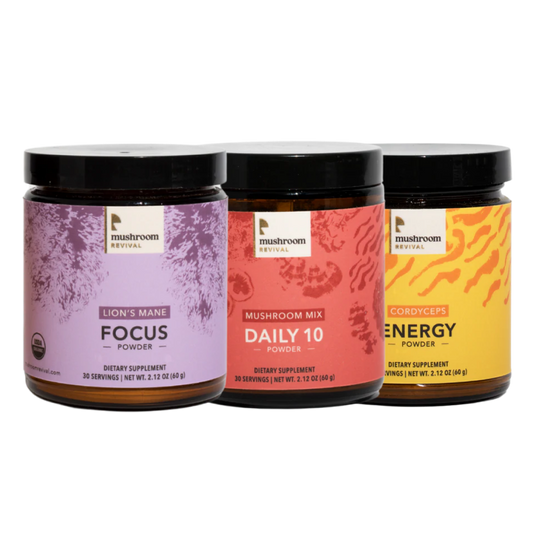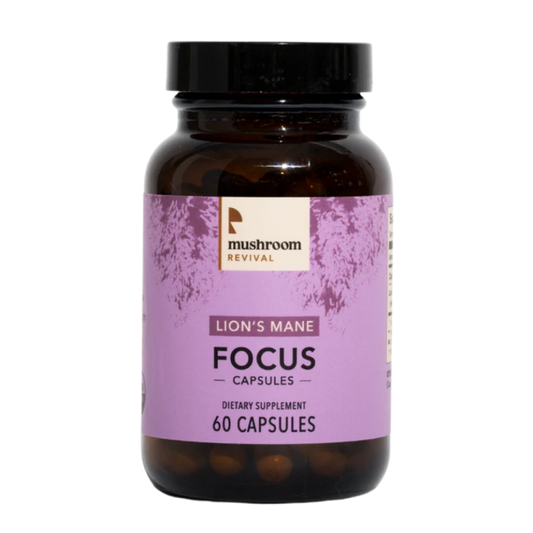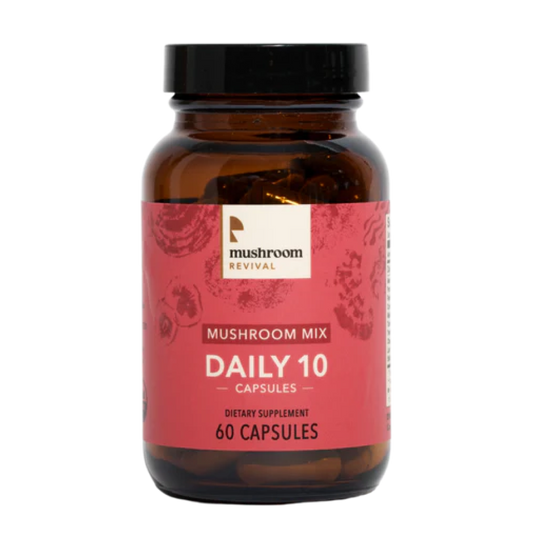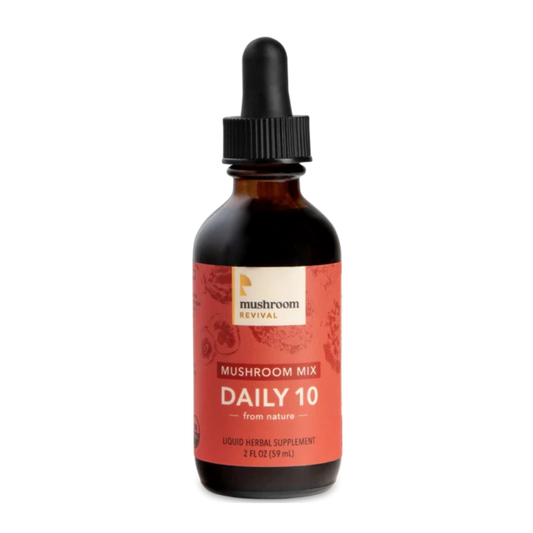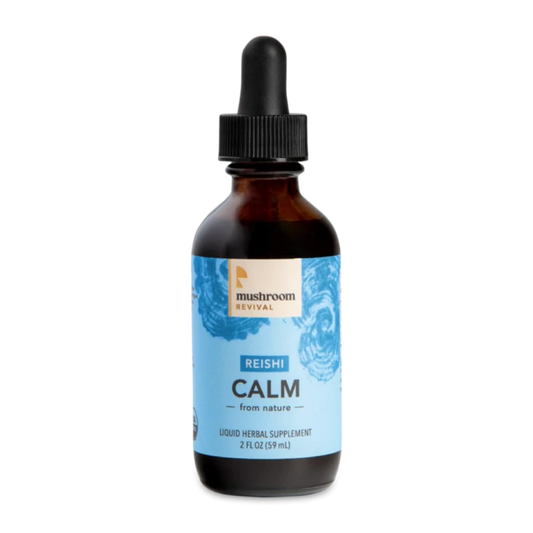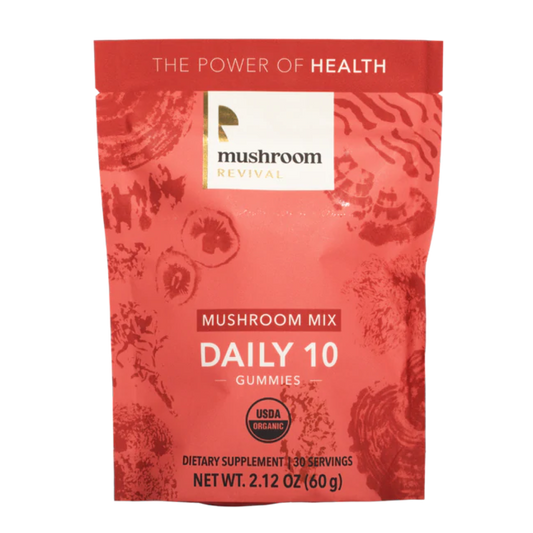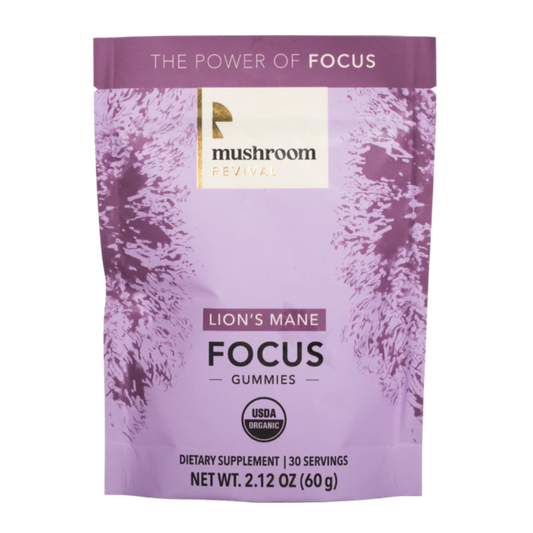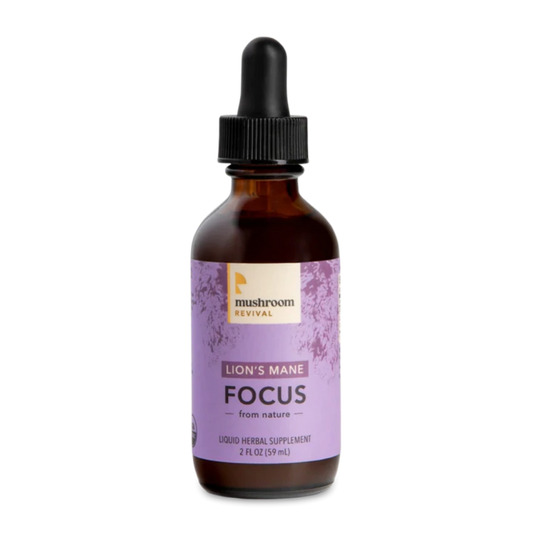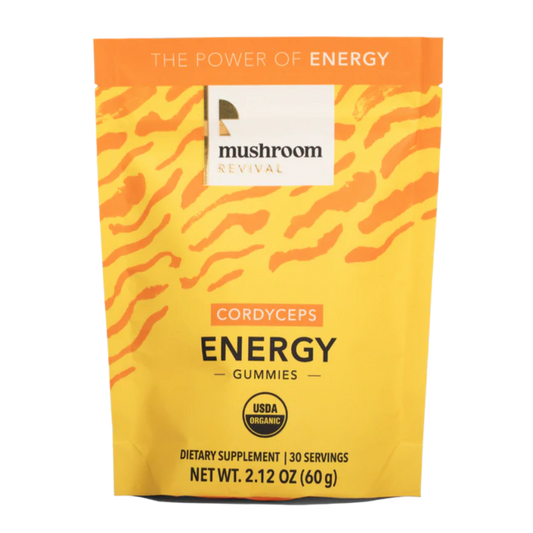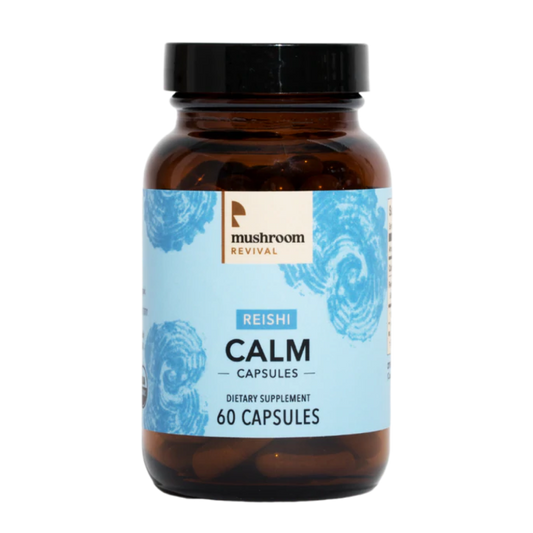Farming with Mycorrhizal Fungi - Dr. Jozsef Racsko
How can we apply mycorrhizal fungi? Today’s topic of applied mycology is a deep dive into the plant's point of view on mycorrhizal relationships. We are joined by plant physiologist and mycologist Dr. Jozsef Racsko, who is a lead scientist at Mycorrhizal Applications — a company bringing mycorrhizal inoculum to industrial agriculture and home gardens alike.
This is possibly the deepest we will go into the world of mycorrhizae until science produces new discoveries on the intricate intimacies between fungi and plants.
Some of our favorite subtopics from this interview are as follows:
1) Mechanisms of mycorrhizae.
To the truly curious, considering form & function of a phenomenon is a way to understand it. We have detailed conversations about how mycorrhizal hyphae and plant roots establish a juncture of consensual exchange. What a symbiosis looks like, physiologically, between these kingdoms.
Ecto- (outside cells), endo- (inside cells), and beyond.
2) When, where, how, and why to use this technology.
Our guest and his team have helped make industrial scale of mycorrhizal applications a possibility. From a a humble homestead to hydroponics to acres of commercial agriculture... there is a mycorrhizal fungus for that. Usually. We also learn about some bizarre cases of plants opting out of this symbiotic potential.
3) What we don't know.
If you listen to this show, you will hear all the questions and hypothesis we explore in the search space of what we know about mycorrhizae. This is important. It will guide our future scientists and explorers of the mycorrhizal web of life to the most needed subtopics — and possibly to the first ever Chanterelle farm.
Other topics we discuss:
- Importance of mycorrhizal diversity in agriculture
- Other symbiotic relationships between fungi & plants such as endophytic fungi
- Current state of farming with mycorrhizal fungi
- Why some fungi don’t form mycorrhizal relationships
- Nutrient content produce grown with mycorrhizal fungi
- What to know about using fertilizers with mycorrhizae
- The roles of mycorrhizae in drought tolerance

Show Notes:
Mycorrhizal Applications Website: https://mycorrhizae.com/
Jozsef Racsko LinkedIn: https://www.linkedin.com/in/jozsef-racsko-9b5609b1/
Mycorrhizal Applications in Horticulture: https://www.youtube.com/watch?v=a4Y4A7TI5aE
How Mycorrhizae Can Improve Plant Quality: https://mycorrhizae.com/wp-content/uploads/2017/03/Mycorrhizal-Status-of-Families-and-Genera-v1.6.pdf
Fertilizing with Mycorrhizae: https://mycorrhizae.com/wp-content/uploads/2017/04/Top-5-Mistakes-in-Fertilizer-Application-PDF.pdf
More useful publications: https://mycorrhizae.com/articles/
TRANSCRIPT
You're listening to the mushroom revival podcast.
Lera 0:04
Hey friends this week we have more micro raizel content for you. We've gotten lots of requests for this topic and specifically with farming. So we found a lead scientist from micro raizel applications Dr. Joseph raxil, who actually began his career studying plant physiology. So mycorrhizae applications provides mycorrhizal inoculants for farmers forest nurseries, landscapers restoration and Eurozone specialists, greenhouses, soil media manufacturers, pretty much anywhere you'd see growing plants. But
Alex 0:39
first, the review of the week we always shout out one review every single episode this one comes from Matt, and the title is great. And the review is my mind is either blown or expanded and often both every episode if you want to get featured on our show, just leave a review and obviously leave a rating it does world support us and you get to hear yourself on our show. And you can always support us as well by going to our website, mushroom revival.com. We have a whole line of supplements on there mushroom goodies functional mushroom to support your health and if depending on when you're listening, in November 2021, we are launching some really, really exciting projects. We have the world's first USDA certified organic mushroom gummies world's first USDA certified organic mushroom capsules, and some stupidly amazingly delicious powders that we're super excited for. And we have more exciting projects coming out in early to mid 2022. So stay tuned, y'all. But let's dive into it. Let us go into the root system of plants and geek out about mycorrhizal fungi.
Jozsef 2:26
I consider myself actually as a plant physiologist because so I started out my career as a researcher at The Ohio State University. And so I worked as an extension research person mostly we treat fruit crops and plant growth regulators. And this is how I got in contact with Balan bio sciences who is actually the parent company of microbial applications. And so I joined Leland, I think 10 years ago or so. And I spent five years with pgrs plant growth regulators. And five years ago, a little over five years, six years ago, Vail and bio sciences acquired microbes with applications and I, I made the move from Chicago to to Southern Oregon to Grant's pass and got into Mike rising. So it was actually not unknown to me. You know what, myco rising macros or fungi er, but I certainly didn't have a whole lot of experience or hands on experience with my crazy. So I'm still still learning in the last five, six years that I've been with Microsoft applications. it's it's a it's a journey. And it's, it's actually very rewarding because this is just a very interesting organism that you know, helps farmers and you know, it's been in nature for over 400 million years. So it's, yeah, it's it's a very rewarding work.
Lera 4:21
I would imagine and before this talk, you know, you comment on an on how little interest there is in mycorrhizal fungi, but it is slowly beginning to build. And I think, What an interesting perspective you have as a plant physiologist, because you understand, basically the anatomy of the plants that these fungi are making relationships with from the plants point of view and then now you're learning the fungal point of view. Could you just give us the elevator pitch to mycorrhizal fungi say someone doesn't even know what that is? And they ask you, what do you what do you say in a few sentences
Jozsef 4:59
you So mycorrhizal fungi, or my crazy form symbiosis with plants and plant roots, and what they do is they have plants taking up more nutrients and water. And this is very important in in stressful situations and under, you know, sailing conditions for instance or drought stress or some sort of nutrient stress, it's, it's, it's very helpful. So, this is how they in fact help the plants and certainly this is not free. So in return for the nutrient and in excess water that they provide to the plant, they require sugars and other carbon sources that they require from the plants. So basically, in both parts, where both parties are, are happy in this relationship, and both of them gets the benefit from this symbiosis. So very briefly, this is how they help help the plants and and this is what the growers normally utilize, you know, in agriculture or in horticulture or in ornamental production, where certainly there are conditions when, when they just cannot provide optimal growth conditions, optimal growing conditions, to the plants, and under these situations, Mike rice, he just thrive and provide the benefits to the plant.
Alex 6:32
Right, and mycorrhizae are everywhere, right? They're all all over the world. And they're, you know, super bio diverse in our soils. But with industrial agriculture, we're actually you know, killing our soils and killing the mycorrhizae in the soil. So I've seen, you know, on like a small scale gardener level, I've seen the powders and the, the kind of gels and the tablets for at home kind of gardeners and horticulturists. But is it available on a massive scale, you know, like, massive 1000s of acres farming is is it? Is that the hurdle that we're trying to get over? Or is it available for farmers?
Jozsef 7:19
Yeah, so it's even though Mike rice has been out there for for several years, there, most of the companies are relatively small, so they they don't really produce you know, a whole lot and normally that package size of the products are relatively small. So I would say they are available, the inoculants are available for commercial use, but there are only a few large companies who would provide, you know, large amounts of inoculum for for, you know, corn, for instance or soybean that are you know, these crops are grown on large acres and and yeah, I think that's the, that's the bottom line. It's, it's available but but there's still you know, the need for for large scale and, you know, large amounts of, of inoculum to be available because it's it's not very easy to to produce or to to manufacture these products. So, these are live organisms, obviously, you know, you have to treat them accordingly. You cannot expose them to excessive heat, for instance, and that could be a you know, a limiting factor in this situation. So, not every companies can, can produce their own inoculum so that's I would say the limiting limiting factor here
Alex 8:55
right? And I didn't know if you're aware people who have never farmed before especially on a massive scale it and they probably drove driven past many farms, you know, you're driving through the Midwest, you're passing by so many corn and wheat fields constantly and so on a large scale How do you even apply it? Is it to the seed? Is it cuttings? Is it sprayed via an airplane over is it you know, a big tractor spraying this liquid is a dusting? Like how are how is this mycorrhizal fungi being applied?
Jozsef 9:38
Yeah, so, there are many different ways to apply Mike rising and mycorrhizal fungi. And so before, you know, going into the, the details, you know how you apply. I think it's, I should mention what, what the active ingredient is, you know, in these products, because it really helps. You know, understanding how, you know how they could be applied. So basically, when we talk about mycorrhizal inoculants, we, we say, mycorrhizal propagules or the, the active ingredient in these products and they are mycorrhizal fungal spores and tiny, colonized root fragments, tiny root pieces that contain Mike rice or five or structures for instance hyphy or vesicles, or spores in them. And so these are very tiny structures very tiny propagules their size range from 50 micron to 300 or 400 micron, for instance, and they could be applied in large scale, we're in large row crop situations at a seed treatment for instance. That's, that's a very efficient way and very easy application method where you just coat the seed with with a slurry that contains mycorrhizal fungi. And it's very common for instance in corn or soybeans or wheat crops when when they you know apply fungicides or insecticides to protect the seed in the first stage after germination. So, Mike Reishi can be applied as a seed treatment, it could be applied as an infrared treatment for instance, you can spray like a liquid formulation in the furrow at the time of the seed placement in the soil or or it could be applied as a drench for instance, it's not really I would say practical for large acre row crops, because you know, the irrigation is not really practiced in most situations, but, but in in I would say vegetable production for instance, or ornamental situations. drenching is also a very good and very efficient, very effective way of inoculating the plants or applying the white rice or property. And so there are many different ways to apply this mycorrhizal fungal inoculum they're mostly as close to the roots as possible, because what happens is they need root exudates. So actively growing roots, that triggers their germination, the germination of the spores, for instance, in the soil. And once they start to germinate the we'll get in contact with the roots and started the infection process and established a symbiosis. So that's the most important thing because when we hear from some growers that well, they didn't see a whole lot of response or we didn't see a difference between the untreated plot and and inoculated plot is almost every single time we we realize that the placement of the property was wasn't sufficient or sufficiently close to the roots or wasn't appropriate. So that's I would say that most limiting factor here is to to place the roots as close please the proper view is as close to the roots as possible.
Alex 13:41
So we got kind of a visual, there's a ton of different ways to apply mycorrhizal fungi. Cannabis close to the roots as possible is one, you know, rule of thumb. Now on the flip side, you know, you're describing their spores and then kind of tiny fragments of the roots. And I've, I've read in books that, you know, an at home method is just, you know, taking some mycorrhizal inoculum and even just like some wild soil and growing some like grass or microgreens or you know, some tiny plants and then chopping up the, the soil and root structure, and then that's inoculum for more of these trays of just like grass or microgreens. Is that a similar process that you guys use? At mycorrhiza? Or, you know what, I'm just trying to picture inside of a mycorrhizal fungi factory, you know, like, how are you guys growing it? Is it bio reactors? Is it trays of plants? Like what's going on? Yes,
Jozsef 14:44
actually, you got a pretty good example that that is very similar to, you know, the large scale production of mycorrhizal fungi. In fact, there are two different ways of producing Mike rice. fungal inoculum. And one is the same way as you described that you grow the host plants and host plants are inoculated. And at the end of the season, you chop up the roots into very tiny pieces. And with the growth medium that they are grown in, they could be used as, as an inoculum to inoculate other crops. So that's a very easy way of producing mycorrhizal fungal inoculum. And it's very, very cost efficient. The only thing is that it takes quite a long time because once once you you know, you have to go through a whole season to grow the host plants and also you have to wait for this roots and root growth, medium biomass to dry down and it sometimes takes over a year. So that's, that's a long process. And we call this in vivo production of mycorrhizal fungi. And there's another way of producing Mike rising and mycorrhizal inoculants and that is called in vitro production and that happens in the lab. So, under sterile conditions, sterile environmental conditions where we use root organic cultures. And these root organic cultures are a very interesting, I would say, plant cultures because they don't really have green leaves, they have only the roots. And these roots can be used as hosts for Mike rising. So the mic rise, he would propagate and reproduce themselves on the roots, they would produce fungal hyphy, fungal spores, and at the end of the growth season, where at the end of that production cycle, we would, you know, just isolate these root pieces and, and also the fungal structures that, that spores and dried and use it as a pure inoculum. The only difference between the two is not just you know, this sterility but also that concentration of the proper use with the lab under laboratory conditions, it's very easy to produce very highly concentrated inoculum with very high high number of propagules mycorrhizal propagules while the in vivo situations where you grow them outdoors, for instance, the and these are normally low concentration products.
Lera 17:48
So it's really awesome. It sounds like people could do this at home if they want to do so. You had an interesting segment on your website about mycorrhizal fungi and hydroponics and I'm curious if you could just speak about this. I'm trying to picture mycorrhizal relationships in hydroponics, and like I said, just these wispy filaments between plants, how does it work? And what does it look like?
Alex 18:15
And can it only work in specific hydroponic systems are all hydroponic systems and can I work aeroponics to oh geez, wow, that's crazy.
Jozsef 18:26
Yes, they can, they can work and you know, it's very interesting, because, when I when we started looking into the benefits of myco arising under these conditions, like hydroponics for aquaponics or aeroponic situations, you know, we we knew that that situations are somewhat different from you know, regular sort of soil conditions because what happens is makaridze thrive under stressful conditions, you know, when there's like drought stress, for instance, or nutrient stress, but under these, you know, hydroponic conditions, there's just not really a drought stress situation, there's not really a nutrient stress, a lot of nutrients trust situation because what happens is, growers try to provide a optimal growth condition, you know, based on a recipe, and they just provide all the nutrients that the plants need. And under these conditions, what we found is that Mike Reiss, he can help in increasing the branching and the architecture or a little bit modifying the architecture of the roots. So they would be more branch so they would have a larger absorption area where they could take up more nutrients and obviously more water that is provided in in these hydroponic hydroponics or aeroponic situations. So while you know in normal conditions in field situations, the main benefit of migraines is that they form these fungal hyphal network that mycelium around the roots. And they can actually reach out of the depletion zone where you know that plants normally take up the nutrients and the water. And under aeroponics and, you know, hydroponic situations, you know, there's just not really a, a possibility to, you know, to expand or to extend this you know, depletion zone, because, you know, obviously, then you're transcended into water provided. But by increasing that level of branching of the roots, that really helps increasing that absorption area of the plants. So this is how they provide the benefits to the plants in under these situations.
Alex 21:04
For people that heard us talking about these products, and we're wondering what we're talking about, so, so hydroponics is a system where plants are put in a flowing water situation, so there's no soil and liquid nutrients are added, and they're absorbed by these plants and aeroponics. It's not flowing water, but it's missed. And so they're kind of hanging in air and it's missing an aquaponics. It's basically hydroponics, but it's hooked up to basically an aquarium where fish are and so the fish pee and poop and they just kind of it's a closed loop system where they trade nutrients and, and the plants clean the water for the fish. And it's it's pretty crazy. So that's why we were you know, jaw dropped about these mycorrhizal solutions in those systems because they're without soil. So that's pretty crazy. But that was just an aside for people who might not know those terms. I'm curious because this is such it's interesting, because I feel like a lot of people who study plants, kind of push mycorrhizal fungi into the, the, the fungal world, and then, you know, avid mycologist, kind of push it a little to the plant world. And it's kind of this in between field of study, where, you know, I'm sure a lot of industrial farmers, they think it's too complicated, too expensive. So I feel like, you know, there are a lot of hurdles in your job. And I'm just curious, like, what, what has been the hardest part? Had has? Has there been times where you wanted to pull out your hair or wanting to give up? Or, you know, I'm just curious, like, what, what's the hardest part of of studying mycorrhizal fungi?
Jozsef 22:58
What the hardest part would be? Um, you know, it's a really tricky question, I think that the hardest, I would say is try to try to integrate this technology into commercial production situation, sometimes, you know, commercial growing conditions are not favorable for mycorrhizal activity. And, for instance, some of the fungicides that are used in, in commercial situations are harmful to my crazy. So Michroma disease, fungi as well. So some of the fungicides can have negative effect or negative effect on their activity. Also, you know, there are other production practices, like using non host blends, could be something that, that could reduce, you know, the population of the microwaves or the natural population of the mic rising in field conditions. So these are sometimes challenges that, that we have to face and, but I think growers learn more and more about Mike rising and they, they understand more, this technology, and they use it very, very wisely. So when we have either trade shows or grower meetings, you know, we got so many very useful and very smart questions that that is really, really shows that that, that growers are really interested in learning more about even in trying to use it in that in the most efficient way possible.
Alex 24:44
And what was your moment of greatest success, but did you have a moment in your studies or working with Mike Arisaig that, you know, was a champion opening moment that you're super proud of that you look back at and say, you know, that was That was your proudest moment?
Jozsef 25:03
Well, we we haven't had a champagne opening moment, but I think
Alex 25:09
Not yet.
Jozsef 25:13
Not yet, but there's something that I think we are proud of as a company is that we are the first who developed a non aqueous formulation of mycorrhizal inoculants. Because there are many different inoculant products on the market so far, and most of them are either pro powders or granular formulations, and there are some water based aqueous formulations, and we used to have these formulations as well, these atheist ones, but their shelf life was very limited. So the shelf life means that the product can be used, you know, up to two years, for instance, or could be, could be put in storage and used efficiently within this two year period. And we were able to develop a formulation that is not as a non water based it's vegetable oil based formulation that keeps the mycorrhizal properties alive for a long period of time. And it's very user friendly. So this is something that, that I think we are very proud of that no one else has this formulation on the market and and in the US it in in several countries actually. Now we got registration, multiple countries, for these for this formulation. So I think that was probably the that moment that we could have opened champagne. For.
Lera 26:55
Yeah, your company seems to be kind of pioneering this field as something you can industrialize and actually use commercially. So I thank you for just contributing to that and offering that to farmers. And I hope that more of them adopt the practice. So I would love to get into what you guys do in particular, and what you've learned throughout the years developing these products. So do you sell different mycorrhizal species depending on the region? Or the plant life that the farmers are working with? And how much can can you generalize about this? Or is it really, really specific or ideally specific, but there's one species that just tends to work for everything?
Jozsef 27:36
Yeah, so most of the inoculum products contain or microbial inoculants contain single species because there are species that are commercially available and it's really easy to propagate or manufacturer use them in mycorrhizal inoculum products. What really, I would say sets us aside from other companies is that we have a number of species that we offer in our products because what we know based on our literature research and our own research trial is that different species of Mike rising rep provide you know, different functional benefits so for instance, one species is really good at taking up more nitrogen for instance, and other species is really good at let's say, increasing water update. Another species is really good at counteracting salinity, tolerance or salinity, stress situation so that's why we believe that a diversity is very important in in our product because you know, different species are needed for you know, different stressful situations or, or different different environmental conditions. And also what we know is that the species composition on the roots of different plans, changes over time, and there's even a seasonality. So in the spring, you know, there are different species that are born or live in symbiosis with the roots that you know, that are different from those that that you know, from CBO is it's in the fall or in the summer. And you know, there are many different you know, interesting facts for instance, you know, when plans are, what a planned phenological stage is also a very important factor here because, you know, in the early stages when the plants are young and they are juvenile for instance, at Apple Tree Um, that that requires you know, different nutrient and different set of nutrients for their growth and development. However, you know, when they enter into their reproductive stage, when they start producing flowers start producing fruit, they require obviously a different set of nutrients at that time as well and so forth, these these differences in their, in their nutrient requirements, they recruit, they actually actively recruit different species of Mike Reiss a because it is believed that that the plant is the main driver of this symbiosis. So the plant produces the root exudates that triggers, you know, obviously, the germination of the propagules and, you know, recruit the Mike rhic for their growth, and you know, at different stages of their phonology, they produce different chemicals in their root exudates that trigger different species to germinate around their roots or around their root root zone. So this is why, you know, we believe that diversity is very important in Mike Riley nozman products, because, you know, there are so many different situations, you know, so many, in different environmental conditions, different stages of the plants, that, you know, that mycorrhizal inoculants are applied, and they have to perform. So, this is, I would say, some sort of uninsurance to have multiple species, and you know, you have a better situation, to, you know, to provide these benefits to the plant.
Alex 31:52
I've heard so much about application of mycorrhizal fungi. But I've read so much about the benefits of endophytic fungi. And I haven't seen one case of anyone trying to apply it to plants. Does that exist? Have you guys research that as a possibility? Is it even possible to industrially apply endophytic fungi? To plan?
Jozsef 32:22
Yeah, so there's some interest and in endophytic, fungi, buddies, just really hard to, to produce them. Right. And I actually, I've heard recently that there's, there's a company in Australia that that started producing them at commercial scale, although I don't know where that where they are right now. But yeah, that's a very interesting, very interesting idea to, you know, to try to use them and there are, you know, several species that could, you know, come into account, you know, for commercial uses, but in the US, I haven't heard any, any companies, you know, trying to, to propagate them or trying to commercialize them? So that's, yeah, that's a that's a very interesting area. We haven't done any research in this regard.
Lera 33:24
Do you know? Do you know if any species are both? endophytic and myco? arisal?
Jozsef 33:33
I would think, no.
Lera 33:38
Cool. And I know we discussed a bit earlier, but something like 95% of plant life, can and do form mycorrhizal relationships. And I'm curious, curious if you can speak to that small percentage of plants that don't form these relationships? Why don't they was that a mechanistic thing? Or are they? Yeah, anything you can say about? Why that 5% is not engaging in that relationship?
Jozsef 34:09
Yeah, you know, that's a very interesting question. And there are only hypotheses so far. You know, this tried to explain, you know, scientists try to explain how to, you know, interpret this phenomenon. And so what I know about it is that you know, this symbiosis or this whole plant mycorrhizal fungi symbiosis you know, started at the time when plants, you know, inhabited land, you know, from sea And at that time, you know, all the plans are all plans were Mike rice Oh, because what happened is when they, you know, inhabited land, there wasn't really a whole lot of soil. Or, you know, nutrient rich, medium where, you know, they could live. So they really relied on some sort of helper and Mike rice, he was, you know, became very handy, providing these, you know, nutritional benefits, you know, taking up or increasing nutrient and water uptake. So, at that time, around over 400 million years ago, whole plants were mycorrhizae and what scientists say is that the some of these plants or plant families lost their ability to form symbiosis with Mike ricey. And, you know, this could be explained by, you know, just some plants or some plant families, you know, grew in environments that were, you know, nearly optimal for growth, you know, a nutrient rich situation, so they didn't really need Mike rhic. But there are certain plans that or certain plant groups that, that just found, maybe a easier way to take up larger amounts of nutrients, for instance, you know, EP Fides that live on the trees, and they don't really believe in the soil, or they don't really need, you know, from Mike rising because they, they take up nutrients from their host plant directly. And yeah, also the, you know, like carnivore carnivores plans that, you know, like fly traps that, that, you know, catch flies or insects to, to get their nutrient supplies. So, you know, it's, it's nobody really knows what happens. But there are certain plant families and plant groups that that just lost their ability to form the symbiosis. So that's, that's, that's a very interesting thing. And you know, just to give you a few examples from commercial crops, for instance, the brassicaceae family, cabbage, cauliflower, canola, broccoli, these are, these are really good examples of non mycorrhizal plants. So, they, you know, they don't really get hurt if, you know if they are grown and inoculated, but my crazy, but what happens is they don't produce those chemicals in their root exudates that would trigger that the germination of these microbes will propagate. So nothing happens if you apply to Mike Reishi. Although, you know, there's no benefit that they could, you know, they could get from the mycorrhizal fungi.
Lera 37:55
I had no idea. cabbage and within our family, again, the mustards that they don't make those relationships.
Jozsef 38:08
Yeah, even spinach and beets are, you know, good examples of the non mycorrhizal plants.
Lera 38:15
So, I'm wondering if, while we're on the topic of vegetables and produce, do you know, how much of the nutrient content is influenced by mycorrhizal relationships? Like, let's say, a plant has a weak relationship? Or, you know, none at all? How much of say the vitamin C content is going to be missing?
Jozsef 38:37
No, actually, we haven't done any research on for instance, the vitamin content, but we did quite a bit of research on nutrient content of the plants. So, you know, obviously, if that symbiosis has formed, Wonder roots, you know, obviously, increases in the nutrient uptake and particularly phosphorus and in micronutrients. You know, like zinc for instance, or copper content could be increased in, in particular, plant crops. So, yeah, so you would see a higher nutrient content, I would, you know, I would expect the higher vitamin content as well. And in fact, now, as you mentioned, these beneficial compounds or chemicals. I did read a study recently about the phenolics content of letters, for instance, greenhouse grown letters, that when they were inoculated with Mike rice he there phenolics content significantly increased. So that's, that's actually a beneficial beneficial I would say the situation in the, in fact, increased the antioxidant content of vegetables as well. That's another finding that in fact, I heard about.
Lera 40:16
Yeah, I believe it's a logical suspicions that plants with better mycorrhizal relationships are healthier and therefore have more beneficial compounds. It's a lot like, you know, any other heterotrophic organism, they are with it in a way. And that leads me to another question where I watched part of a talk you gave, I don't remember who it was with, but it was on YouTube. And it was a wonderful talk. And you were describing how fertilizers can be detrimental to these networks, even, I believe organic fertilizers, and I was wondering, why is is the fungus having an overload of nitrogen? And it has, like, can it not regulate what it does and doesn't uptake? Or are these fertilizers disrupting cell wall structure? Or is it a whole slew of things? And what should farmers do at home if they want to fertilize but they also want to maintain a mycorrhizal relationship?
Jozsef 41:16
Yes, so what happens under situations when when farmers over fertilize particularly nitrogen and phosphorus are the two good examples that could reduce the activity of myco arising. And what happens is, in fact, these fertilizers don't kill the mic rising or they don't really have a, you know, a lethal effect on them. But what happens is, these high levels of fertilizers make the plans stop producing those root extra dates, where those chemicals in their root accidents that would trigger the germination of you know, these these proper yields, because what happens is that the plant senses that there's quite a bit of nutrient in the soil, and they don't really need this symbiosis. So they stop recruiting Mike rise your day, stop, exuding those chemicals that would trigger their germination. So this is actually a temporary inhibition of mycorrhizal activity, I would say, or Mike rice or spore germination. Because what happens is when the plant consumes this nutrients, or the nutrient level, you know, decreases over time in the soil, the plants start to produce or to, yep, to produce and exude those chemicals in the root, actually, that will trigger the mic rising. So the mic rising is going to be staying or sitting in the soil, and nothing's going to happen until they get into contact with those who have accidents that will trigger them. So basically, they are not high levels of fertilizer, they won't kill the microbes busy, just temporarily inhibit their germination and obviously that formation of symbiosis. And so there are certain conditions when you know, growers have to apply fertilizers and you know, they want to still maintain the natural population of the mic rising. So in these situations, what we recommend is, is try to avoid applying very high levels of fertilizers at one time so you're trying to distribute it you know, over time, or if it's not possible if you use like slow release fertilizers, they would be probably a better option than a you know quickly dissolving fertilizers because what happens is, those slow release fertilizers release the nutrients slowly and for a longer period of time. And that means that the mycorrhizal symbiosis can still establish and you know, the higher levels of nutrients won't be won't be inhibitory, two to myco arise all germination of mycorrhizal spore germination and you know, there are there's, I would say a misconception with you know, the fertilizer rates and the fertilizer application and Mike rising when we talk about it because you know, there's quite a bit of research put in into this area where, you know, scientists tried to reduce the amount of fertilizers and apply Mike rising and you know what they normally say that Yeah, you know, if you apply Mike rice, you can reduce the amount of fertilizer because the mike rice he held taking up more nutrients and that's true under certain kinds difference but what you have to I think emphasize is that Michroma z helps take up the nutrients from the soil so the nutrient has to be in the soil even if it's like hardly or or hardly accessible or a non soluble form for instance rock phosphate that is normally not available for the plants even if it's in the soil but Mike rice he can solubilize these these non soluble nutrients in the soil. So the most important thing that you know what what growers have to understand is that some sort of nutrient has to be in the soil for the mycorrhizae to be able to take up and transport it to the plants because you know Mike rising on mycorrhizal fungi don't produce nutrients just you know, out of thin air. So the nutrient has to be there but but this is how they infect how plants you know be more efficient
Lera 46:13
yeah i mean they are conduits in a sense miners and they their delivery that's you know, it's a postal service of goods and services and I have just like a myco logical question that you may or may not know if there's a ton of these nutrients floating around the mycelial network and it's deciding Okay, this plant is going to get this much in this plants gonna get that much where in the meantime, do these fungi store the excess nutrients as in vacuoles within the cell or does it just kind of float around the cytoplasm or does it not take up more than it needs.
Jozsef 46:52
So, what happens is there are specific storage organs or storage structures that Mike rhic use and these are the spores and vesicles that could you know spores can be formed either inside the roots or root tissues, root cells in fact and spores Can you know can be formed as an extra one an extra radical mycelium in the soil so my depends it really depends on the species you know, how they how they form their sports, but these are the storage organs so this is where they store the the nutrients and in fact lipids as well so when you know these conditions arise when there's not enough nutrients in the soil they can go to plants can get access to these these storage reserves of nutrients where they can utilize these
Lera 47:57
so some nutrients they'll make a spore packed full of extra nutrients and like lay it in the root of the plant and just kind of let it sit there as a treat for later wow that is yeah I that's that's that blew my mind.
Jozsef 48:16
Yeah, but those are very very tiny spores right?
Lera 48:19
So not like spores meant for the fungus to go to the next generation but more of oh that
Jozsef 48:25
can be used for that as well. Okay. And they store on nutrients as well in there.
Alex 48:31
I've heard as well in desert environments they create structure structures to hold water as well is it kind of a similar situation?
Jozsef 48:44
Yeah, the vesicles can store both nutrients and water as well. Wow.
Alex 48:48
Kind of like a Camelback for later
Jozsef 48:54
well do you know I read a lot about it you know that the water can be stored in in the vesicles but it's just for me it's hard to kind of visualize because these structures are so tiny so small, you know can they really you know stored that you know large amounts of water you know, if there's like a drought situation if you know that that would really make a difference. But yeah, obviously they could because you know, there are so many research experiments showing that you know, under drought situations, you know, the plants that are inoculated by Mike rising you know, perform much better So, there's obviously you know, something in it, but that yeah, it's, it's, it's really interesting, and it's Yeah, it's sometimes hard to imagine.
Alex 49:49
I guess going to switch gears here a little bit. We both come from a mushroom cultivation background, and I've seen so many people talk about, you know, cultivation of morels or truffles. And it's always, you know, a head scratcher for so many mycologist and the people who figured it out are very hush hush about their techniques. And you know, I went to China and saw these farms that were I mean the pictures and videos of morels for acres and acres, you know beyond what the eye can see of Morel farms outside it was unbelievable. And then, you know, I know my copious green morels and trays and I know some farms in Oregon are growing some truffles Is that something that you guys have any interest in is growing these niche, but expensive micro raizel mushrooms It feels like you guys are the experts and feels like you could maybe add some some, some techniques that that are unavailable right now. Yeah,
Jozsef 50:57
we actually work with Ecto mycorrhizal mushrooms. Because, so, you know, there are different types and different kinds of microbes, your mycorrhizal fungi that exists in nature. And, you know, we, when we talk about Mike Reishi, we normally mean arbuscular, Mike rice, your end the wide variety that for CBS has been most of the agricultural plants, however, and these, you know, Mike rhic are normally microscopic, so we don't really see them, you know, their, their hyphae, or their sports, because those are so tiny, and they are bubbling inside the root cells and in the soil anyways. But there's another group of, of microbes he called Ecto mycorrhizae. And they formed this symbiosis with with forest and forest trees and the hardwoods, conifers oak, for instance. And they do have these fruiting bodies, these large, you know, microscopic fruiting bodies that, you know, in several cases, are edible. And so, what we do is that we do have inoculants for, for conifers and for, for active mycorrhizal plants, but we don't produce these, we don't propagate things we collect them from, from natural habitats, from from forests, for instance. And our interest is, you know, to, to try to grow them, somehow, but it's, it's very challenging, because it's just really, really hard to, you know, sometimes find a recipe, you know, to grow them without the host plant, because, you know, if you think about the host plant in, in, in this case, inactive, like crazy, or trees. So, you know, while it's, it's hard to grow some sort of agricultural host plant, as an individual culture, you know, some sort of grasses, or corn, and used a route, as you know, as an inoculum. However, it's really hard to grow trees, because it takes a lot of time and, you know, it's, it's, it's hard to, to harvest and, you know, it's just really difficult to, to produce,
Alex 53:29
you guys don't have trays of trees growing.
Jozsef 53:36
And we don't, but we are very interested in, in, in looking into it, and that's one of our future research interest would be to try to grow these, these mushrooms, you know, either in vitro situations or in vivo situations somehow, because it's, it's something that, I think it's, it's, it's really needed, because, you know, if you, if you think about it, in certain years, you know, there's a drought, for instance, or there's a forest, huge forest fire, and in the natural habitat is destroyed, or, you know, you don't really, you're not really able to collect enough mushrooms, but you still have to, you know, produce enough inoculum for customers and growers, so you cannot produce inoculum in one year and just, you know, skip the other one. So that's something that I think we eventually have to be involved in. And we will be actually looking into that.
Alex 54:46
Grants Pass right now.
Jozsef 54:48
Yes, it's in Southern Oregon. Cool. Yeah.
Alex 54:51
Are you going to the truffle festival next year?
Jozsef 54:55
Ah, hopefully Yes.
Alex 54:56
Cool. Yeah, I'm hoping to go as well. I'm super excited. We just got a puppy and we're looking to train her to be a truffle Hunter. Oh, really? Yeah, we're in Austin, Texas right now. And I wish I'm like kicking myself because all all the truffles are in Oregon and all the truffle festivals and all this stuff. But we have pecan or pecan truffles here. We're gonna start training her on those. And yeah, but I definitely want to go out next
Jozsef 55:28
year. Are you trained? Oh, by the way?
Lera 55:31
Well,
Alex 55:31
you start I've been interviewing a bunch of people, and we haven't really started our training yet. But she, our dog loves the smell of mushrooms, and she actively goes out, even without her training. So you start with truffle oil, or like, oh, and and you put it on like a something and you hide it in a room. And then once she finds it, or the dog finds it, you give them a treat. And then you keep, you know, then you put it in your house and then you they try to find it in the house. And then you go outside. So there's more sense there's more natural sense. And then you get to the point where you bury it and you use like an actual truffle. Oh, and then you have to train them not to actually eat it. That's hard, you know, because I think it stimulates their Endocannabinoid receptors, and actually has like a almost psychoactive effect on dogs. Even more really than humans. So it actually like almost gets them high, in a sense, and so they want to eat it, they want to consume it, they're really excited. So you're going to train him to find it, but then just sit or you know, to eat bark or something just to tell you like, Hey, I found a truffle and I'm not gonna eat it. So yeah, we're excited. Apparently truffles are the easiest, but you can train a dog to find any mushroom or anything. anything really. I mean, yeah, cancer. I mean, dogs are trained to sniff cancer or Coronavirus or bombs, you know, I mean, see insects. Yeah, yeah, they can sniff owls are amazing. Wow.
Lera 57:13
So I'm sorry to rewind. But there was another I have one more question with the in vitro cultivation of mycorrhizal fungi. And I'm, I just want to ask you, because I've asked a few people and I get different answers. And Google tells me different answers. But I want to see what you have to say, because I think you're probably the most knowledgeable of anyone I've talked to. It makes sense that you can give a mycorrhizal species all the nutrients it needs, right? It's got it needs nitrogen, it needs a carbon source, it needs blah, blah, blah, blah, blah. You could totally give that to them in vitro, but it wants to emulate fruiting. And is that Do you know what the chemical signals are? That it's not getting? Is it a hormone from the plant? Is it stress? I mean, I don't know if you can say anything about that. But yeah. Yeah, like, we've, we can figure that out. We could give it to them. But there's, there's something else that we haven't figured out. What What is that?
Jozsef 58:14
Well, if I knew I would probably be a millionaire. Yeah, we would probably Yeah, break and break it
Alex 58:23
down for all of us.
Lera 58:25
If you know the category, you know what I'm saying? Like if you know yeah.
Jozsef 58:30
Yeah, you know, it's, it's a really good question. Because in some cases, in for instance, some beliefs for instance, it's possible to grow them and in the US, you know, different plant hormones even and, and I think wheat seeds as a as a host, you know, to provide you know, the, the carbon source, and, you know, even though these are not, not trees, not conifer trees, but most of that the plants, you know, won most of the fungi, the mushrooms, the, they really need something from, from the trees that that is that is, you know, needed for their growth because, in some cases, even the, they saw that older trees are more receptive for the symbiosis and the, you know, when the trees are getting older, you know, there are more mushrooms popping up. And there were some experiments showing that as well then younger trees, so older trees produce that some sort of chemical maybe, that that is, you know, we're responsible for, you know, this, this growth of mushrooms, but, yeah, certainly there's something some sort of grow chemical that growth factor that that might be needed. But yeah, I wish I knew. You know what it was, that would definitely help us. You know, producing our actual mycorrhizal mushrooms. But yeah, this is a very, very good question. That Yeah, I can I can only speculate.
Alex 1:00:26
This might be like your favorite trial, but do you have a favorite mycorrhizae a species? Or? Or on the flip side? If you don't? Do you have like, you know, what's the most fun fact that you know about my garage? Or the weirdest? The weirdest fact that you know about my garage?
Jozsef 1:00:51
About myco? rising, huh? Um, I recently read a paper. Gosh, I don't know, it was some, some very, I think in the East Coast, where they estimated that total mass of mycorrhizal fungal mushrooms in a forest. And it was like a astronomical amount or weight that, that they came up with. And that was one of the universities I won't be able to remember or recall, you know, what it was, but it was maybe several 1000s of metric tons of, of fungal ectomycorrhizal, fungal mycelium and, and fungal structures that they, you know, that they estimated that could be in a forest. So that was that was I think, very interesting and yeah, interesting. fact that, you know, they can, they can grow so huge because, you know, they, they formed these mycelial networks, with several trees. And, you know, even in a forest, nearly all of the trees could be, you know, interconnected somehow through these mycelial networks. So, yeah, that's, that's something that, that I found very, very interesting and nearly unbelievable, but that's, you know, that's a fact.
Lera 1:02:31
A whole field of mycology is pretty amazing. And this podcast continues to do that every guest we have teaches us something new that we, you know, just have a little bit more respect and amazement for the kingdom fungi every week. It's wonderful. And for our last question, we wanted to know if there's any research that you would like to see done with mycorrhizal fungi, we have a lot of young listeners who want to get into the field of mycology and this question has been instrumental to them just to know what these fields need and you know, to help kind of guide them on their academic careers.
Jozsef 1:03:15
Yeah, um, you know, since I'm from the industry I I'm interested more from, you know, commercial aspects and commercial relevance of myco rhic. So, you know, there are multiple types or multiple kinds of mic rise you know, we talked about the extra mic rising and no mic rising, but there are smaller groups or smaller kinds You know, that's formed symbiosis with orchids so orchids have their own specific mic rise equalled orchid mic rising ericaceous plants so blue blueberries rhododendrons, azaleas, have their own Michroma called ericaceous Mike riser aka Mike rising. So from my standpoint, it would be I think, a great research area to try to commercially propagate these mushrooms and try to commercialize them because they are not really available at commercial scale. And you know, that would be I think, very, very interesting and it could be very important because you know, if you think about the ornamental industry, orchids represent, you know, a significant part of, you know, the ornamental plants and very high value plants. So it would be it would be relatively easy to, you know, to sell microbial inoculants to orchid growers. So I would be very interested in in knowing you know, how to develop Have a production technology for these orchid mic rising or we're recording like crazy for instance, you know, for commercial use and and i think that's that's if somebody is interested in, in in this type of research that would be an excellent opportunity and you know we would be interested in in that as well so yeah, if you if you are interested please contact us and you know maybe we could we could do some research and and work on this area.
Alex 1:05:38
I love work it's so beautiful I It reminds me of there was a greenhouse at my university and the greenhouse manager. He was there at the university for I want to say like 40 years and he had this kind of like boom box where he would play classical music all day. And he would smoke cigars in this greenhouse and work with orchids. And he was the first person in the world I think it was a albino orchid that he developed this strain. Oh really? Yeah. And it was it was amazing just like every time you would walk into the greenhouse, you know this old horticulture is you know smoking a cigar watering his orchids you know and it's just so many beautiful varieties it's really really special plants and and really super unique and it's unbelievable that they cannot survive for the first I think what is it seven years of their life without a mycorrhizal connection
Jozsef 1:06:47
Oh, I think it's really depends on the species but it's very interesting that you know how they germinate you know their seeds and how they take up the nutrients because you know when you think about you know the benefits of Mike rising you know, they normally you know we live under conditions where you know in tree tops or you know in one trunks for instance or you know dried organic matter where you know, you don't have a whole lot of roots and it's just really hard to get access to nutrients so that's a very specialized you know form of of my crazy that you know that that leaves with and yeah I yeah, I actually i i don't know if if if the first seven years is where you know, they have to live in symbiosis with Mike rising
Lera 1:07:54
I know they're hard to keep alive killed every record I've ever had definitely pick you little flowers but this is awesome I super appreciate your time today Joseph and all the research you've done and for sharing an hour and 10 Minutes with Us on your Saturday this we will be spending our Saturdays like this learning about fungi
Jozsef 1:08:23
Yeah, well thank you very much for your interest I really enjoyed the you know our conversation actually I learned quite a bit from you guys as well. So it's, it was a symbiotic relationship.
Alex 1:08:39
Well, yeah, I can't wait for our next interview when you crack the code and figure out what hormone is responsible. You crack the code for for mushroom producing micro Shawn trail farms and Oh yeah, I can't wait to visit your Shawn trail farm.
Lera 1:08:57
Big thanks to Joseph. Be sure to check the show notes for more materials on this topic. And if you ever figure out how to make a shantelle farm, please let us know
Alex 1:09:09
or if you already have a pre existing truffle farm please hit us up because we are training echo our puppy right now to be a truffle Hunter. We have pecan or pecan trees here in Texas and we are starting there but we would love to branch out. And so hit us up if you own a tropical farm and are about to be inspired to grow a chanterelle or or like species farm next. And as always, much love amenda spores be with you.







